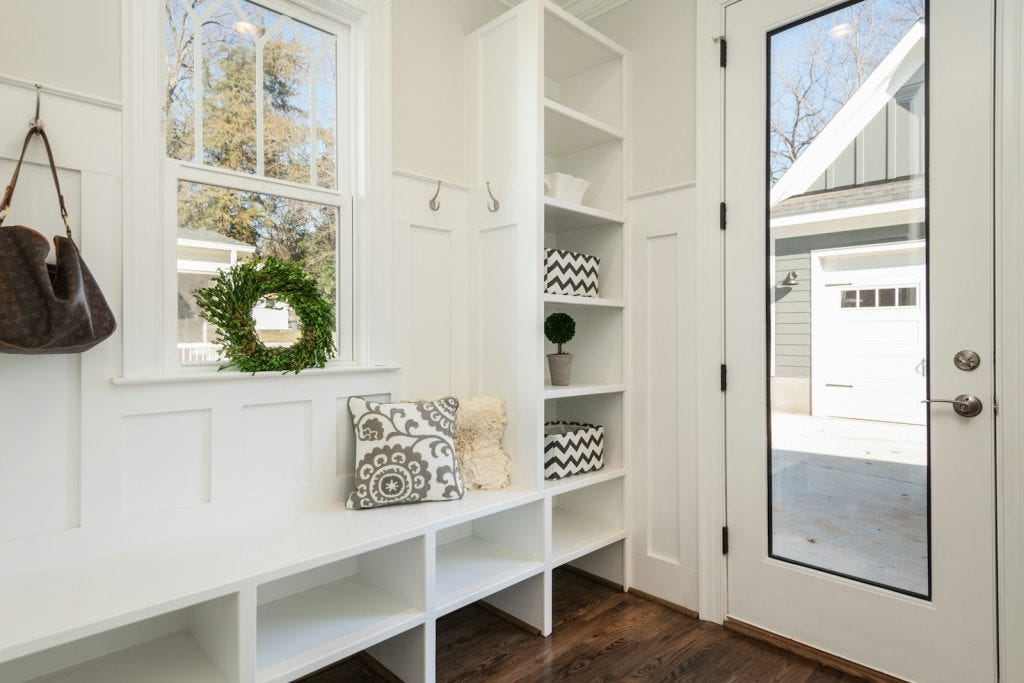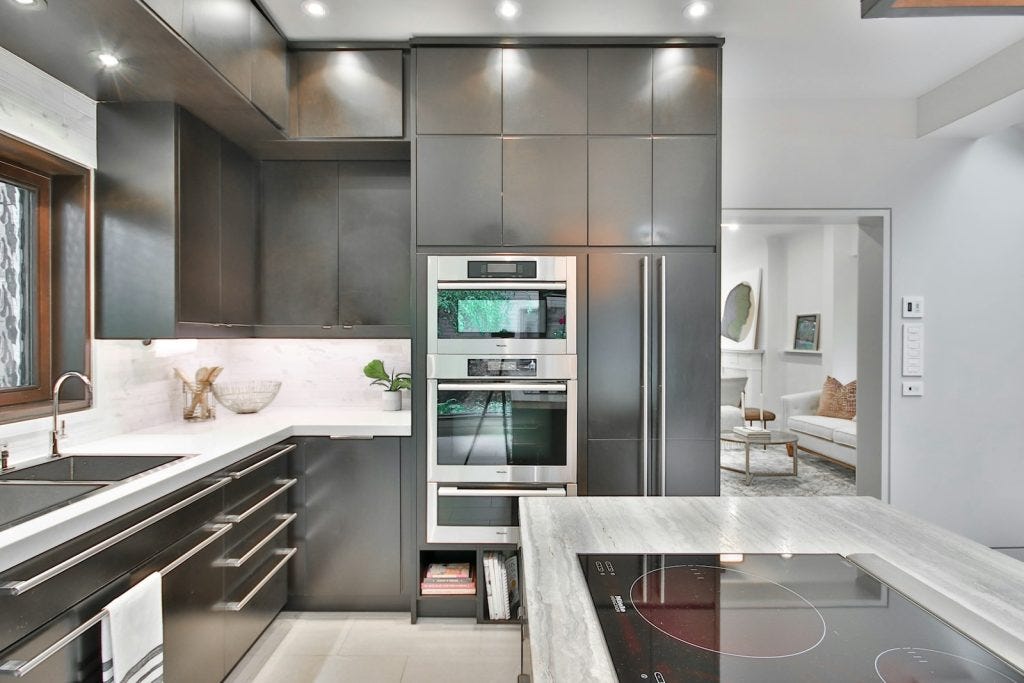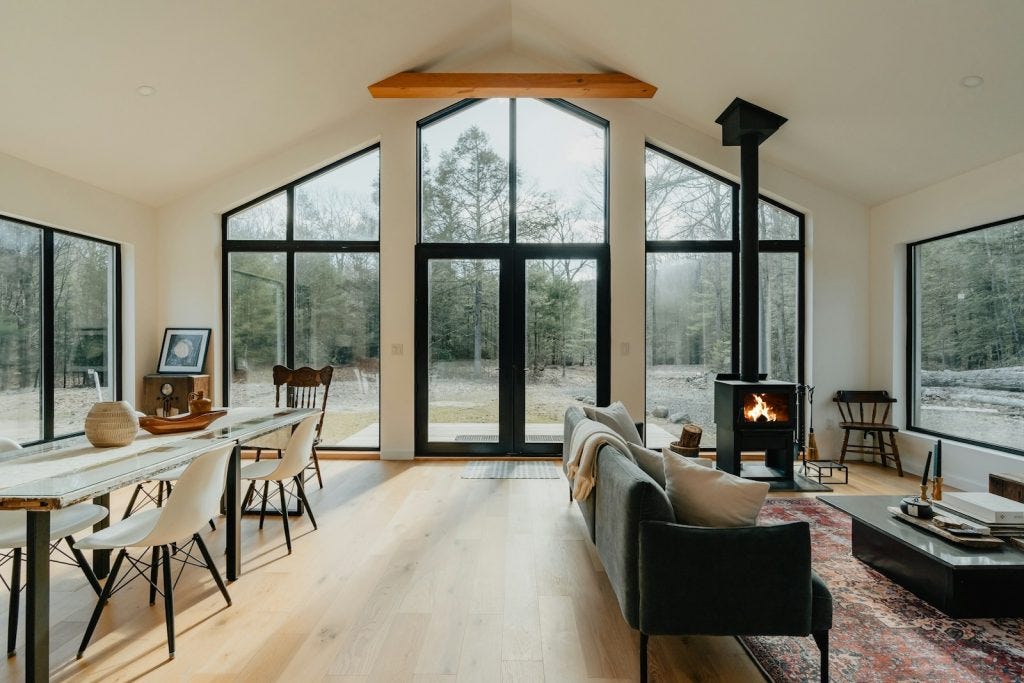Focus on these 5 spring home improvement projects for maximum ROI (and happiness)
Experts say these timely upgrades deliver the ideal combination of lifestyle benefits and financial returns.
Spring offers a fresh opportunity to revitalize your living space. But with rising material costs and growing utility bills, being strategic about home improvement projects is key. The right ones deliver immediate satisfaction and lasting value, helping you enjoy your space while protecting your investment.
I spoke with industry experts who shared this season’s most impactful updates. They also gave insight into average costs, potential return on investment, and tips to save on your home makeover.
Spring 2025 home improvement trends
“This season, homeowners are leaning into practical upgrades with a stylish twist,” notes Carissa Kristoff, a realtor at Berkshire Hathaway HomeServices Select Properties.
Steep utility costs have made energy efficiency a top renovation priority for homeowners this spring. They’re investing in upgrades that offer meaningful savings while maintaining comfort.
Inside the home, smart storage solutions are changing how people organize their spaces. Custom pantries and built-ins are especially popular, combining functionality with design appeal.
Multifunctional outdoor living spaces are another major focus. “[Families] want areas that feel like extensions of their indoor space, complete with shade structures, outdoor kitchens, and integrated lighting,” explains Jason Farr, owner of outdoor living and design company Aviara Pavers.
Spring home improvement projects to add to your to-do list
“Spring is the perfect time to tackle upgrades that boost livability and resale value,” says Kristoff. Below are five home update projects worth considering this season — complete with details about DIY potential, costs, and expected ROI.
Add more storage
Built-in storage solutions such as closet organizers, garage systems, and kitchen pantry units make your home neater and more functional. Identify cluttered areas and unused spaces that could house pull-out drawers, shelving units, or under-stair cubbies. Smart storage won’t only keep your belongings organized — it can also make rooms feel more spacious.
DIY: Yes (basic systems and shelving)
Average cost: $500 to $3,000
Average ROI: up to 80%
Author’s perspective: After endless frustration with our small, overstuffed bedroom closet, my fiancé and I installed a custom IKEA system for $1,500. What used to be a daily treasure hunt for clothes became an organized space where everything has a home. This simple upgrade transformed our storage capacity and living experience. Money well spent!
Upgrade your home appliances
“Old appliances are sneaky money drains,” warns Francis Kaspar, a handyman and HVAC technician at The Chill Brothers. “They chug more energy, break down when you least expect it, and don’t look great.”
New appliances do more than look good in your kitchen or laundry room. They can cut energy bills and make daily tasks easier. Many modern appliances offer smart features such as remote control through phone apps while using less water and electricity.
DIY: Yes (for plug-in appliances including refrigerators, washers, and dryers)
Average cost: $2,500 to $8,000 for a full kitchen suite
Average ROI: 60% to 75%
Tip: Consider getting Energy Star-certified models and ask utility companies if they’re offering spring rebates.
Install an energy-efficient HVAC system
Facing a July heatwave with a clunky, unreliable AC unit is no fun. “That’s why spring is a smart time to upgrade to an energy-efficient HVAC system,” says Kaspar.
Modern heating and cooling systems help you save money and stay comfortable year-round. A new system runs quieter, removes humidity better, and spreads air evenly throughout your home. Look for units with high SEER ratings (16 or above) to maximize energy savings and qualify for tax incentives.
DIY: No (requires a certified HVAC technician)
Average cost: $5,000 to $12,000, depending on system brand, installer, and where you live
Average ROI: 60% to 70%
Author’s perspective: My home’s AC died in the scorching summer of 2023. With two pugs panting desperately and HVAC companies booked solid, we endured two miserable weeks waiting for a replacement. The lesson? Spring maintenance or replacement is crucial. Even if a full upgrade isn't in your budget, schedule a tune-up before summer demand peaks. Your family (and pets) will thank you for avoiding our sweaty, stress-filled disaster.
Replace old windows
Dual-pane windows offer immediate energy efficiency and strong returns on investment. This upgrade may be worthwhile if you live somewhere that gets frigid in winter or scorching in summer. According to Fred Garrity, founder of remodeling company GC Makeovers, window replacements are showing favorable cost-versus-value ratios in 2025.
Spring provides the ideal climate for window installations. The moderate temperatures allow for proper sealing and prevent your home from losing too much energy to cooling or heating.
DIY: No (requires a professional window installer)
Average cost: $21,000 (based on ~10 windows at $2,100 each)
Average ROI: 67% (not including energy savings)
Create an outdoor living space
Making a cozy outdoor space is an excellent way to expand your livable footprint. “A fire pit with gravel and string lights is a spring favorite,” says Kristoff. You may also add a built-in kitchen and covered seating areas to transform your yard into a year-round gathering space.
Farr emphasizes that spring is ideal for this project. “[Do it] before [the] summer heat kicks in, and [enjoy] major functional and lifestyle value,” he says.
DIY: Yes (basic landscaping and furniture)
Average cost: $800 to $100,000, depending on the scope
Average ROI: 60% to 80%
Which do I do first? How to prioritize home improvement projects
Start by creating two lists:
Urgent needs (must-dos)
Cosmetic wants (nice-to-haves)
If you have issues with infrastructure or foundational elements, they should take priority over a cosmetic upgrade. “We often see homeowners jump into cosmetic upgrades, only to find out later they have structural issues (e.g., drainage or retaining walls) that require backtracking,” warns Farr. “Prioritize based on urgency, longevity, and how each upgrade supports future projects.”
Once you get structural projects out of the way, Kristoff recommends sprucing up things you see and use the most. “That might be the front door, kitchen hardware, or bathroom vanity that has seen better days,” she says. Focus on one project at a time. This will give you a sense of progress and make the rest feel much more manageable.
But are spring home improvement projects worth it?
Generally, yes. Smart spring renovations can save you money right away and boost your home’s value over time. “There’s also a lifestyle return — creating a space you love and can actually use matters,” Farr points out.
However, your exact ROI depends on market conditions, project quality, and neighborhood standards. For example, “a $3,000 patio may offer more joy (and buyer pull) than a $20,000 kitchen redo if the market doesn’t demand gourmet cooking space,” Kristoff explains.
Tip: Keep your total renovation budget within 30% of your home’s market value. This helps protect your investment and ensures you can recoup costs when you sell.
How to budget and pay for your home improvement projects
A detailed budget helps prevent costly surprises during your renovation. “Start by listing all desired projects,” advises Farr. “Then, break them down by scope, materials, and labor.” Consider noting which projects you might DIY, and which are better outsourced to a professional.
After creating a realistic budget, decide how you’ll fund your home improvement project(s):
Personal loans: Get quick funding with fixed monthly payments.
Home equity line of credit (HELOC): Borrow against your home’s value with lower interest rates and flexible withdrawals.
Cash-out refinancing: Replace your current mortgage with a larger one to access home equity.
Contractor financing: Take advantage of payment plans from certain contractors. If you choose this option, review their interest rates and terms first.
Credit cards: Use this option for small projects you can pay off soon (to avoid high-interest charges).
Tip: Farr recommends adding a 20% buffer for unexpected expenses. And if you’re working with a contractor, clarify who purchases what materials. Track every expense in a spreadsheet or notebook, and adjust your budget as needed.
Tips to save money on home renovations
Experts say it’s possible to stretch your spring renovation budget without sacrificing quality.
Here are some ways to save:
Shop local: Kristoff suggests checking out salvage yards or community buy/sell groups, which often have better deals.
Reuse and repurpose: “[Consider painting] old cabinets or [swapping] drawer knobs instead of replacing the whole drawer,” Kristoff recommends.
Buy display models: Look into floor samples and last year’s models, as they often sell at steep discounts.
Consider look-alike materials: “Sometimes, using an alternative paver or stone that’s more available can save thousands,” advises Farr.
Do simple prep work yourself: Handle basic demolition or painting to reduce labor costs.
Pay in cash: “You have the most negotiating power with any contractor using cash [as] leverage for a better price,” says Garrity.
Get several quotes: Before committing to a contractor, Farr recommends comparing the scope, prices, materials, and timelines.
Spring forward with your renovation plans
“Spring is for fresh starts, not financial stress,” emphasizes Kristoff. Successful home renovations involve choices that protect and enhance your investment. Before exploring home improvement loans, map out your projects in a detailed spreadsheet. Include associated costs and realistic timelines. And in the process, don’t underestimate the power of simple upgrades.
If your projects are too complex for DIY, consider contacting contractors now. Their schedules fill quickly this time of year. First, work with them to tackle safety and efficiency upgrades that deliver immediate value. Then, move on to cosmetic improvements that make your dream home.
Enjoying Wavecomber and want to support my work? You’d make my day with a Pink Drink.
Note: This story was originally published on https://wavecomber.com/spring-home-improvement-projects/.
Sources:
1. Consumer Reports, “How to finance a home improvement project.” Accessed 22 Apr 2025.
2. Consumer Reports, “Here's why new appliances use less energy.” Accessed 22 Apr 2025.
3. Energy Star, “List of ENERGY STAR energy efficient products.” Accessed 22 Apr 2025.
4. Energy Star, “Explore homeowner benefits.” Accessed 22 Apr 2025.
5. Salal Credit Union, “Financing home renovations: Home improvement loans vs. credit cards.” Accessed 22 Apr 2025.
6. U.S. Energy Information Administration (EIA), “Increases in U.S. residential electricity bills in 2023 were outpaced by inflation.” Accessed 22 Apr 2025.












Great work!
My DIY skills peak at assembling IKEA furniture wrong three times before giving up, but I’m still inspired.